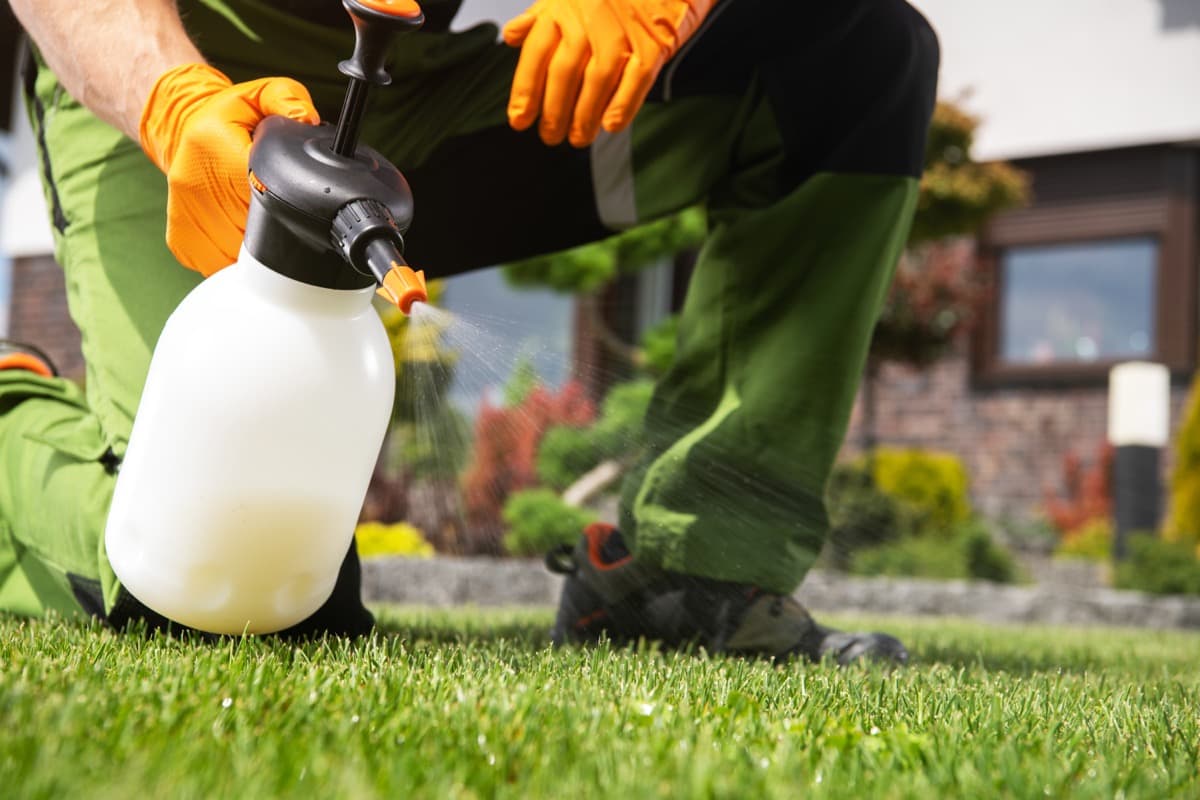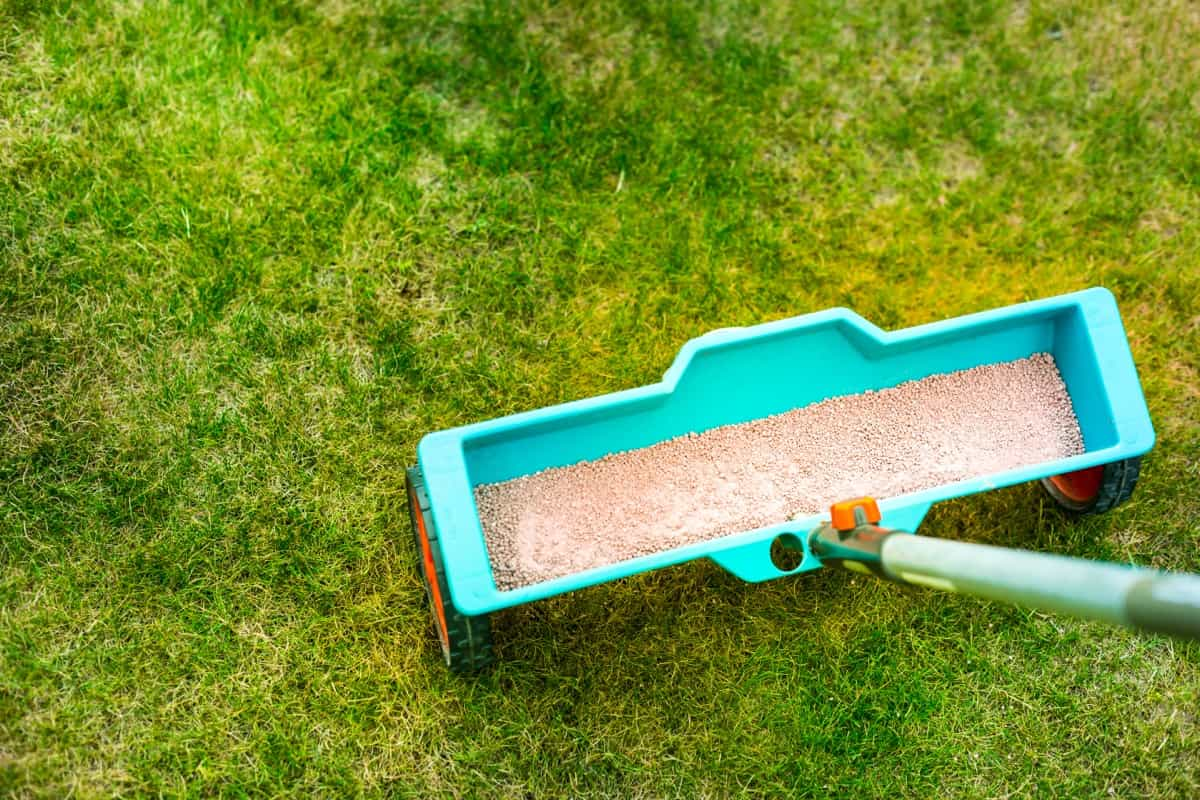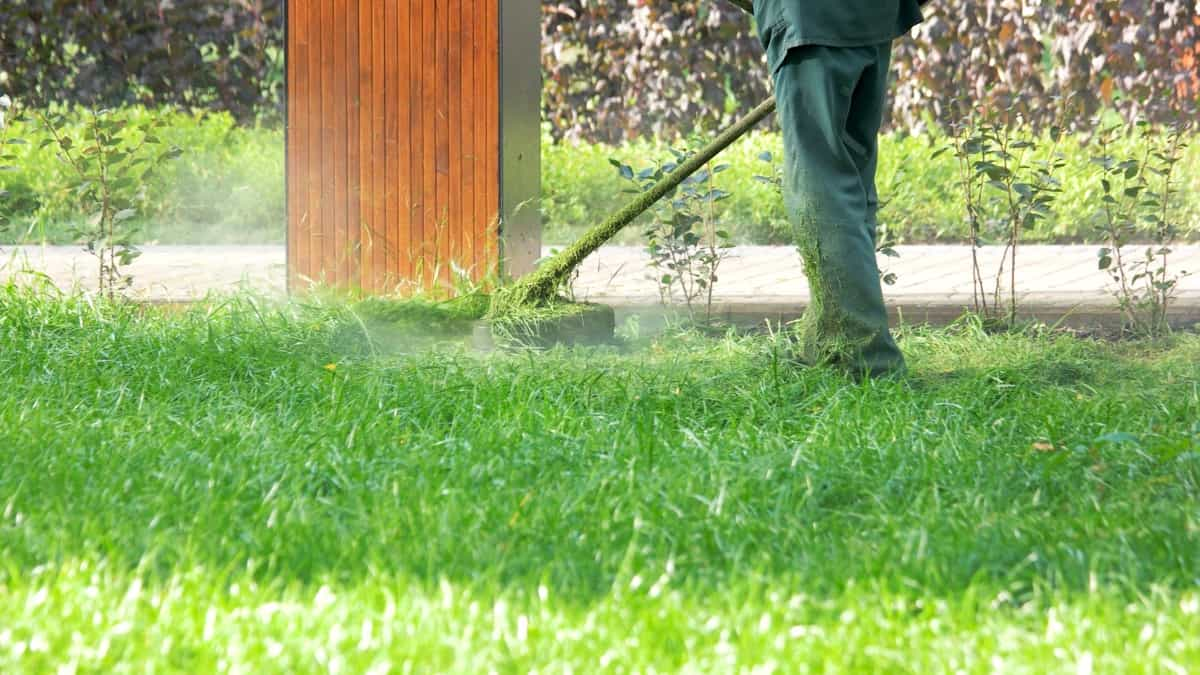A beautiful, healthy lawn adds curb appeal to your property and creates a welcoming outdoor space for relaxation and recreation. Weeds are a constant battle in lawns, but there are natural remedies that can help control them without resorting to harmful chemicals. You can keep those pesky invaders at bay by regularly mowing at the proper height and using organic weed control methods such as hand-pulling or vinegar solutions.

How to Troubleshoot Common Lawn Problems
Natural Remedies for Weed Control in Lawns
- One effective method is hand-pulling. This may seem labor-intensive, but it’s a simple and environmentally friendly way to remove weeds from your lawn. Be sure to pull out the entire root system to prevent regrowth.
- Another natural option is mulching. Mulch helps retain moisture in the soil, keeping your lawn healthy and hydrated.
- Vinegar is another potent weapon against weeds. Mix white vinegar and water and target those pesky invaders directly at their base. The acetic acid obtained in the vinegar will kill most weeds within hours.
- If you prefer a long-term solution, consider introducing beneficial insects into your lawn ecosystem. Ladybugs, lacewings, and parasitic wasps are all-natural predators that feed on garden pests like aphids or caterpillars, which attract weed seeds.
Preventing Lawn Pests: Tips and Tricks
When maintaining a lush, healthy lawn, nothing can be more frustrating than dealing with pesky pests. One of the most effective ways to keep pests at bay is by practicing good lawn maintenance habits. Regular lawn mowing to the proper height can help discourage pests from making themselves home in your yard.
Another important step in pest prevention is removing debris or clutter that may provide hiding spots or breeding grounds for bugs. This includes raking up fallen leaves, clearing grass clippings after mowing, and regularly cleaning gutters to prevent standing water – a prime breeding ground for mosquitoes.
Natural deterrents such as companion planting can also play a role in pest prevention. For example, marigolds are known to deter aphids, while lavender is believed to ward off mosquitoes. It’s best to consult a professional pest control service that can offer safe and effective solutions tailored to your lawn’s needs.
Identifying and Treating Common Lawn Diseases
Lawn diseases can be a frustrating problem for any homeowner or gardener. One common lawn disease is a brown patch, which appears as circular patches of brown grass with a dark border. You can apply fungicides specifically formulated for this disease to treat brown patches and adjust your watering schedule to avoid overwatering.
Leaf spot is yet another common disease of lawns. Remove infected leaves promptly to prevent leaf spot from spreading further and improve airflow around your lawn by trimming back overhanging vegetation. Powdery mildew can wreak havoc on your lawn’s appearance. Powdery mildew thrives in shady areas with high humidity levels. Regularly pruning trees or shrubs nearby to increase sunlight penetration can help control its spread.
Effective Organic Weed Control Methods for Lawns
- One effective method for organic weed control is hand-pulling. Remove as much of the root system as possible to prevent regrowth.
- Another natural solution for controlling weeds in your lawn is mulching. Applying a layer of organic mulch around plants and in bare spots will help suppress weed growth.
- Corn gluten meal is another popular organic option for preventing weed growth in lawns. This natural pre-emergent herbicide inhibits seed germination, effectively stopping new weeds from taking hold in your yard.
- By incorporating these effective organic weed control methods into your lawn care routine, you can maintain a lush, green carpet without harming the environment or exposing yourself and your family to potentially harmful chemicals.
In case you missed it: Step-by-step Guide to Making Hummingbird Food for Your Garden: Effective Homemade Recipes

How To Deal with Lawn Grub Infestations?
The first step is to identify if you have a grub problem. Look for signs such as brown patches of grass that easily pull up like a loose carpet or increased activity from birds, skunks, or raccoons digging in your yard.
Once you’ve confirmed the presence of grubs, there are several methods you can use to control them. One option is applying nematodes – microscopic worms that naturally prey on grubs – to your lawn. Another effective approach is using chemical insecticides specifically designed for grub control. Additionally, aerating your soil and overseeding regularly helps keep your lawn healthy and less susceptible to grub damage.
Managing Lawn Fungus: Causes and Solutions
One common cause of lawn fungus is excessive moisture. When your lawn stays wet for extended periods, it creates an environment for fungal growth. Poor drainage or overwatering can contribute to this problem. To prevent fungal infections, ensure your lawn has proper drainage and avoid overwatering. Improper mowing practices can also contribute to lawn fungus problems.
Cutting grass too short weakens its defenses against diseases, including fungi. Maintain a healthy mowing height and ensure that your mower blades are sharp to minimize stress on the grass. Removing debris such as leaves or clippings from your lawn will also help prevent fungal spores from spreading further across the grass surface.
Safe and Eco-Friendly Solutions for Lawn Pest Control
- One effective method is using companion planting. By strategically placing certain plants in your lawn, you can deter pests naturally. For example, marigolds repel nematodes and whiteflies, while lavender deters mosquitoes and moths.
- Another eco-friendly option is introducing beneficial insects to your lawn. Ladybugs, lacewings, and praying mantises are all-natural predators of common pests like aphids and caterpillars.
- Additionally, homemade remedies can be used as safe alternatives to chemical pesticides. For instance, mixing garlic with water creates an effective spray against many insect pests, including beetles and aphids. Neem oil is another popular organic option that acts as an insecticide and fungicide.
- By choosing eco-friendly solutions for lawn pest control, you’re protecting your yard and contributing towards a healthier planet overall.
Tips for Preventing Weed Growth on Your Lawn
- Dealing with pesky weeds is one of the most common challenges homeowners face when maintaining their lawns.
- Proper mowing techniques play a crucial role in preventing weed growth.
- In addition to regular mowing, proper watering practices are essential for weed prevention.
- Furthermore, practicing good soil health management goes a long way in preventing weed growth as well.
- However, it’s important to follow label instructions carefully and apply these products at the appropriate time for optimal effectiveness.
Identifying and Treating Lawn Diseases: A Comprehensive Guide
- The first step is to understand the signs of common lawn diseases. Look for discoloration, thinning patches, or unusual growth patterns in your grass.
- Once you’ve identified a potential disease, it’s time to take action. Start by adjusting your watering habits to prevent further spread of the disease. Most lawn diseases thrive in moist conditions, so don’t overwater your lawn.
- Remember that prevention is key to maintaining a healthy lawn free from disease. Proper care practices such as regular fertilization, promptly overseeding bare patches, and good weed control measures will go a long way in keeping your turf strong and resilient against potential threats.
In case you missed it: Top 12 DIY Lawn and Garden Edging Ideas for Beginners

Integrated Pest Management for A Healthy Lawn
One key aspect of IPM is establishing a strong foundation for your lawn through proper cultural practices. This includes regular mowing at the appropriate height, watering deeply but infrequently, and providing adequate nutrition through fertilization. A well-maintained lawn is less susceptible to pest infestations. Implementing good cultural practices can help prevent many common pest problems.
Another crucial step in integrated pest management is identifying the specific pests affecting your lawn. This may involve using beneficial insects or nematodes as natural predators or employing physical barriers like netting or traps. Regular lawn monitoring is essential in maintaining its health and preventing major infestations. Watch for signs of damage, such as yellowing grass patches or chewed leaves. Early detection allows for prompt action before pests have a chance to multiply.
Conclusion
A lawn is a simple yet beautiful feature of any garden or landscape. It is an area covered with soil and adorned with lush green grasses and other durable plants like clover. This patch of land is meticulously maintained at a short height using a trusty lawnmower. Lawn serves aesthetic and recreational purposes, making it an integral part of any outdoor space.
- Feed Your Flock for Less: Top 10 Tips to Save on Chicken Feed
- Ultimate Guide to Ossabaw Island Hog: Breeding, Raising, Diet, and Care
- Hatching Answers: The Top 10 Reasons Your Chickens Aren’t Laying Eggs
- Eggs and Economics: Breaking Down the Cost of Raising Backyard Chickens
- Defend Your Greens: Proven Methods to Keep Iguanas Out of Your Garden
- Ultimate Guide to Cinnamon Queen Chicken: A Comprehensive Guide for Beginners
- Ultimate Guide to California Tan Chicken: Breeding, Raising, Diet, Egg-Production and Care
- Ultimate Guide to Marsh Daisy Chicken: Breeding, Raising, Diet, and Care
- 10 Types of Chicken Farming Businesses You Can Start for Profits